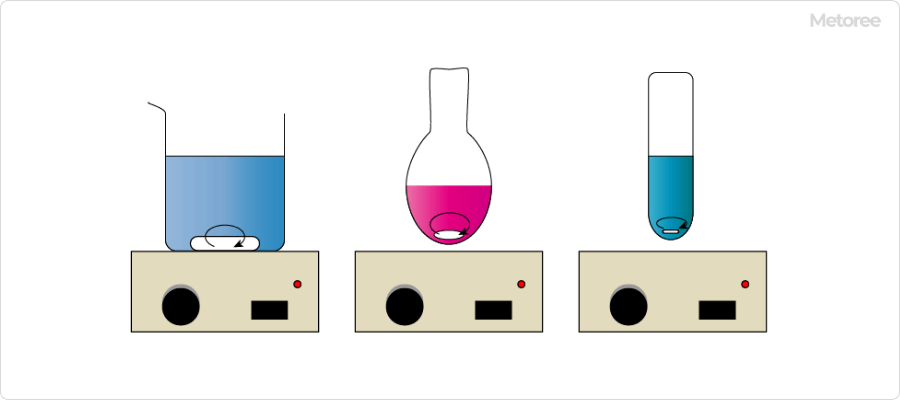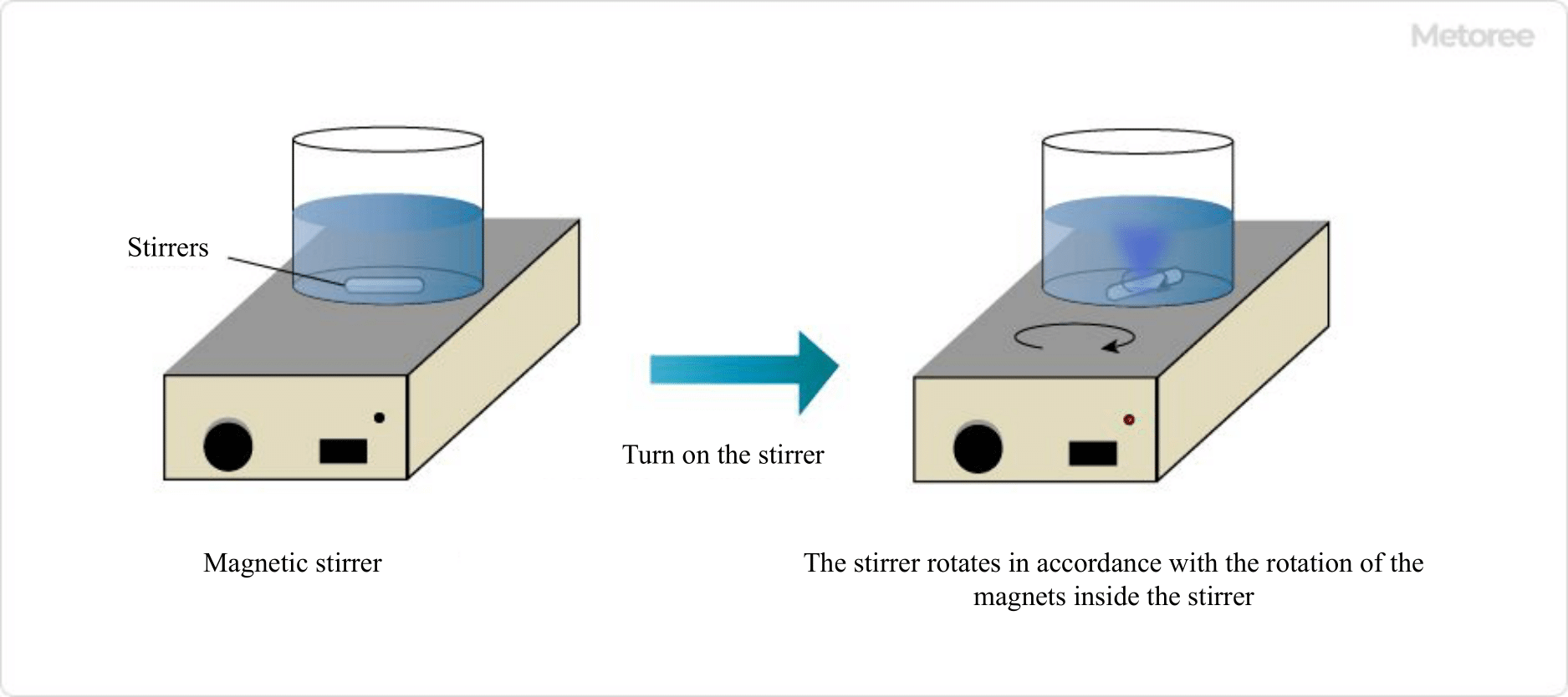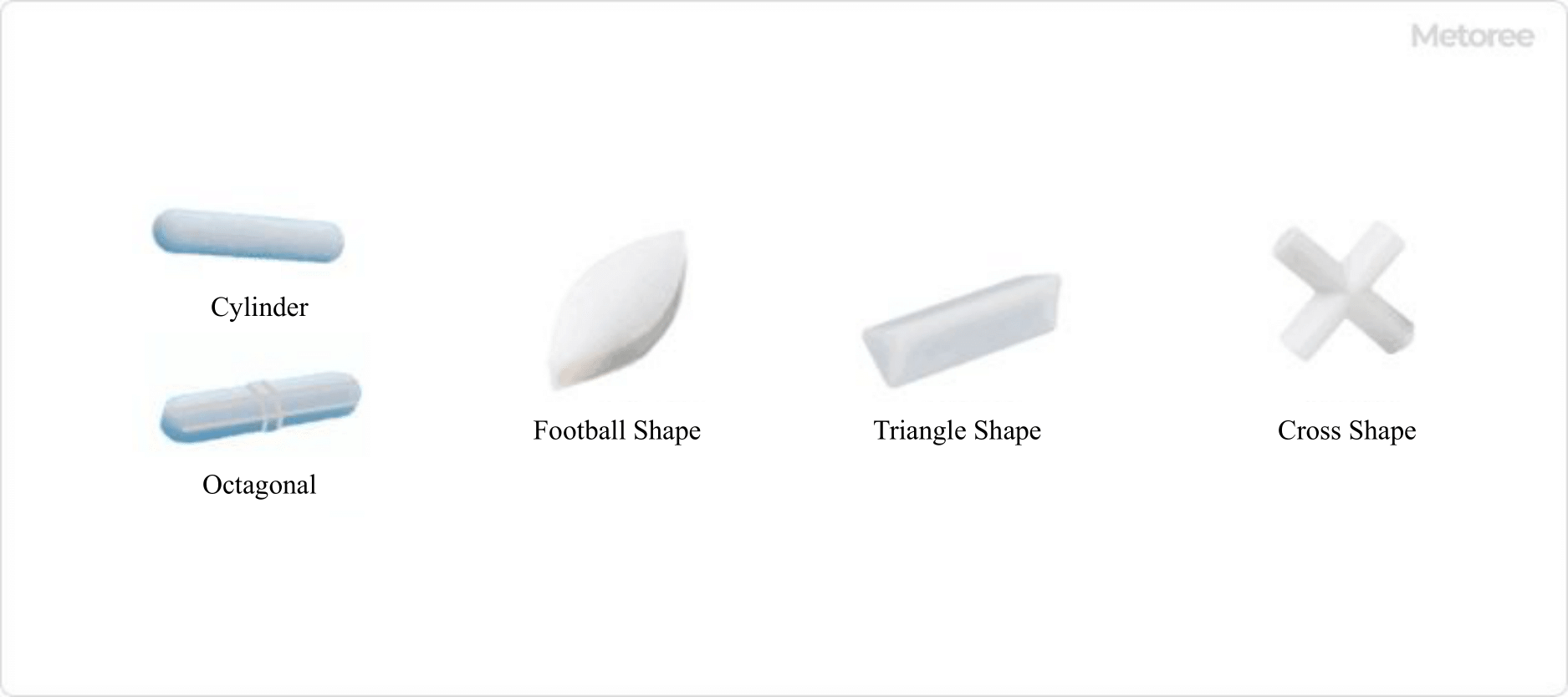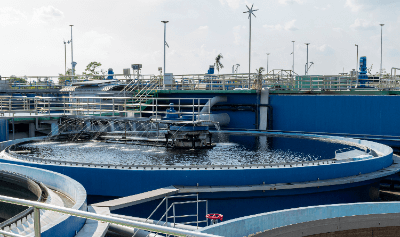What Is a Stirrer?

Figure 1. Image of a stirrer
A stirrer is a laboratory instrument made of small magnets used to stir liquids.
It is sometimes called a stirrer bar, stirrer tip, or rotor. The most common way to use a stirrer is to place a container containing a stirrer on top of the magnetic stirrer and rotate the stirrer. The stirrer in the container rotates with the movement of the magnets in the magnetic stirrer, thereby stirring the liquid.
Uses of Stirrers
Magnetic stirrers are used in chemistry, biology, pharmacy, medicine, and all other fields of experimentation, development, and analysis that require the stirring of liquids.
They have the advantage of being more efficient than simple bar magnets themselves. They are also easier to use than gear-driven electric stirrers because they have no moving external parts to break or wear out. To achieve good stirring conditions, it is important to fine-tune the speed of the magnetic stirrer.
However, it is difficult to handle viscous liquids or thick suspensions, and stirrers of different shapes and sizes should be used to stir larger volumes or more viscous liquids.
Principles of Stirrers

Figure 2. How to use the stirrer
Stirrers are usually used in combination with a magnetic stirrer. The mechanism by which the magnetic stirrer and stirrer agitate the liquid in the container is as follows:
- Place the liquid and stirrer in the stirrer container and place it on top of the magnetic stirrer.
- There is a magnet inside the magnetic stirrer, so the stirrer and the magnet inside the magnetic stirrer attract each other.
- When the magnetic stirrer is turned on, the magnet inside the magnetic stirrer begins to rotate, and the stirrer rotates with it.
- The rotation of the stirrer stirs the liquid.
Because the stirrer is small, it can be cleaned and sterilized more easily than other devices or stirring rods. However, when mixing viscous liquids or thick solutions, it is preferable to use a different stirring method because the stirring force may not be sufficient.
A container that does not require complicated sealing or other conditions and does not affect magnetism can be used. Typically, it is used in laboratory glassware, such as vials or beakers.
Also, stirrers are usually coated with Teflon or glass and are chemically inert. They will not contaminate or react with the mixture during mixing.
Types of Stirrers

Figure 3. Various stirrers
The stirrer’s stirring power depends on the liquid being stirred and the shape of the container. Various shapes are commercially available, ranging in size from a few millimeters to several centimeters.
1. Rod-Shaped Stirrer
This is the most commonly used and common stirrer. It is used to agitate containers with flat bottoms, such as beakers.
2. Football-Shaped Stirrer
This stirrer is tapered like a football. The tapered structure enables smooth stirring in round-bottom flasks and eggplant flasks.
3. Octagonal Stirrer
It is characterized by its octagonal cross section and a central band for rotation. The central band prevents the agitator from hitting the container during stirring.
4. Triangle-Shaped Stirrer
This stirrer has a triangular cross section. It has strong stirring power and is used for stirring liquids containing sediments or liquids with strong viscosity.
5. Cross-Shaped Stirrer
This stirrer is cross-shaped when viewed from above. The cross-shaped agitator can create a vortex when stirring, thus possessing strong stirring power.
How to Select Stirrers
Stirrers are selected according to the quantity and condition of the material to be stirred, the container to be used, and the power of the stirrer’s motor. Although there are many different types of stirrers available, it is recommended that you clarify the purpose of your use and use the information in the stirrer specifications as a guide in making your selection.
The following are examples of magnets used in stirrers:
1. Neodymium Magnet
This magnet is made by sintering neodymium, carbon, and boron together. It exhibits high magnetism among permanent magnets. The disadvantages are its high price and the fact that its magnetism changes with temperature; it should be used at 80 °C or lower.
This magnet is made by sintering iron oxide and barium together. Not only does it exhibit stable magnetism, but it is also inexpensive. These magnets are easy to use for large objects.
3. Samarium-Cobalt Magnet
This magnet is made by combining samarium and cobalt. Because it uses a rare metal, it is even more expensive than neodymium magnets. It is sometimes used as a material for Stirrers because its magnetism is stable even at high temperatures.
Manufactured by sintering neodymium, boron, and iron, these magnets have the best magnetic properties. Due to their low temperature characteristics, they must be used at temperatures below 80°C. It is used as a strong magnetic stirrer or a super strong magnetic stirrer.
Other Information on Stirrers
1. Prevention of Contamination by the Stirrer
The stirrer is a device that can easily cause contamination. After removal from the solution, they should be cleaned by an appropriate method that removes the solution used.
Before use, make sure the surface is clean and discard any with yellowing.
2. Removal of the Rotor
After using the rotor, remove it by placing a magnet against it from outside the container or by using a rod made of magnets. After removing the rotor, do not touch it carelessly and wash it.



